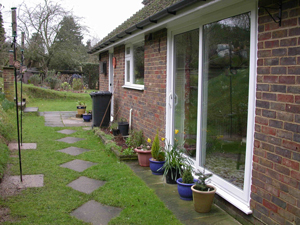Gardens as habitat
Add together all the gardens in Britain, and you'll have an area greater than that occupied by the county of Suffolk. Viewed in this way, our gardens can be considered an important habitat at the national level. Of course, our gardens do not exist as a single continuous entity but are, instead, highly fragmented and often embedded within other habitats. Despite this, there is plenty of scientific evidence to support the assertion that gardens have a value for wildlife and a role to play in the maintenance and conservation of biodiversity.
Gardens as a resource for birds
The isolation of many gardens from 'natural habitats' within the wider countryside is likely to be less of a problem for mobile species, like birds, which are perfectly able to reach and utilise gardens and the resources that they contain. Habitat specific density estimates, derived from the BTO/JNCC/RSPB Breeding Bird Survey, suggest that 62% of the House Sparrow population, 54% of the Starling population and 33% of the Blackbird population breeds within human-occupied sites (Newson et al. 2005). Such figures represent the value of gardens and other urbanised habitats for at least some breeding birds.
Gardens can also be important for birds at other times of the year, as revealed by the BTO Garden BirdWatch. Many species show a peak in their use of gardens late in the winter, something that is particular apparent for species like Yellowhammer and Reed Bunting (farmland species that utilise rural garden feeding stations at a time of the year when seed supplies elsewhere have been depleted).







Share this page